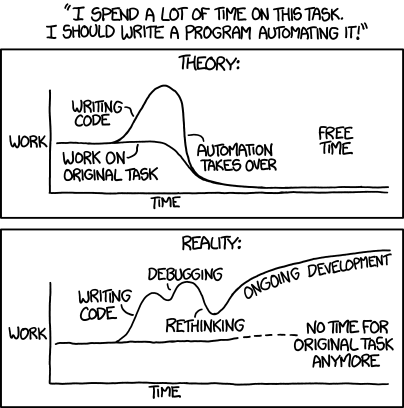Automate All The Things? Maybe Not
I’m fundamentally lazy. That’s why automation appeals: less work for me. Get the machine to do it instead. But automating everything isn’t always the right answer. Sometimes you need to ask yourself: Does this task need to be done at all? Or can I get someone else to do it for me?
Automating tasks carries some overhead. If you’re really unlucky, you’ll end up spending more time on the automation than doing it manually:

So if you can eliminate tasks, you’re in a much better position. Here’s a few contrived examples, based around a fictitious email provider:
Eliminating Tasks: Maximum Email Size for ‘Special’ Users
15-20 years ago we had limited bandwidth, and limited storage. It seemed reasonable to limit the maximum email message size. Otherwise people would send monstrous 2MB attachments. Of course, there were always ’special’ cases that needed to be able to send enormous 5MB AVI files. So we had special groups of users defined that could send large emails.
Users could put in a request to the Help Desk to get access to send large emails. That would go via some manager, who would of course approve it. Someone would then need to manually update that Continue reading

